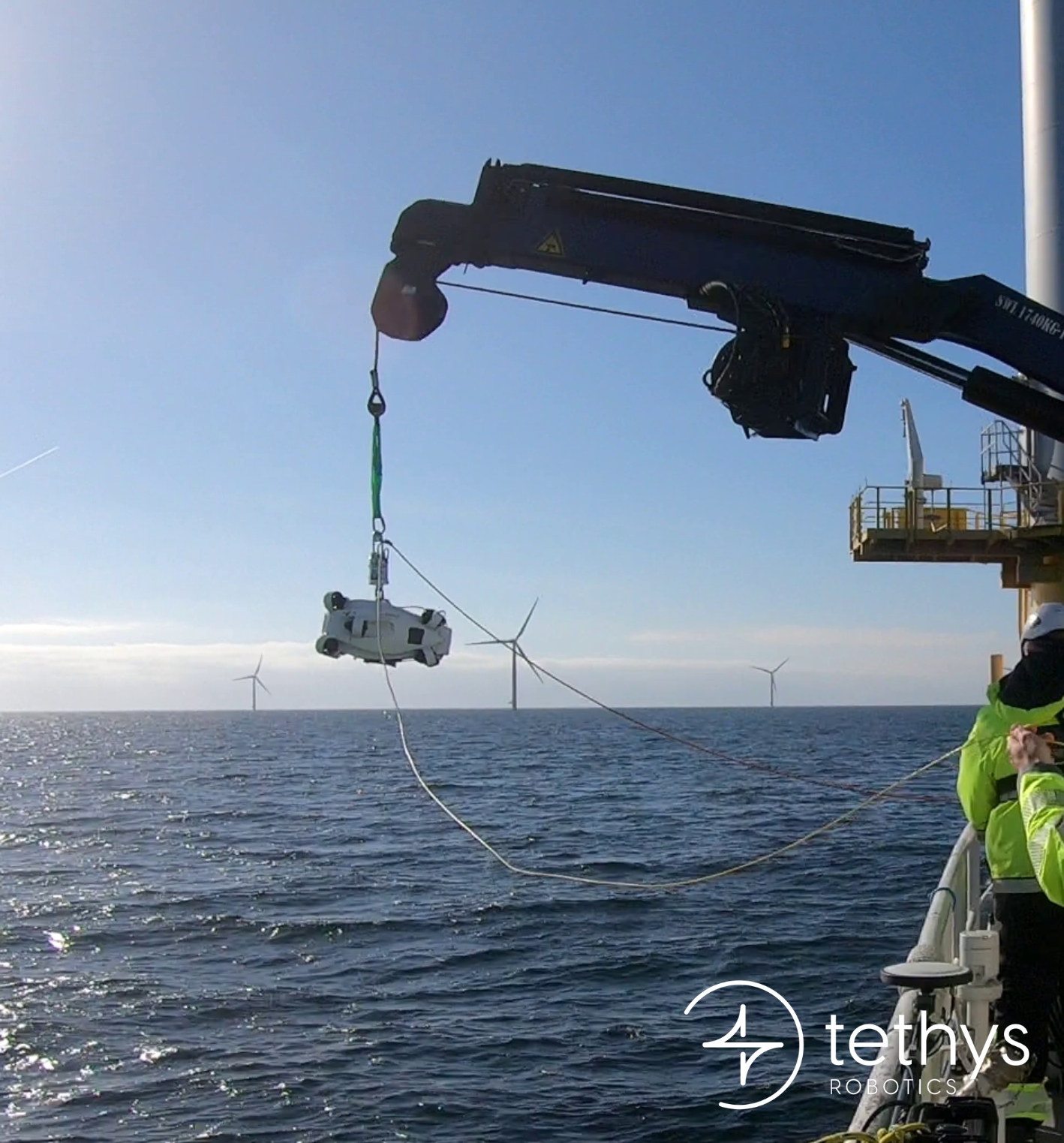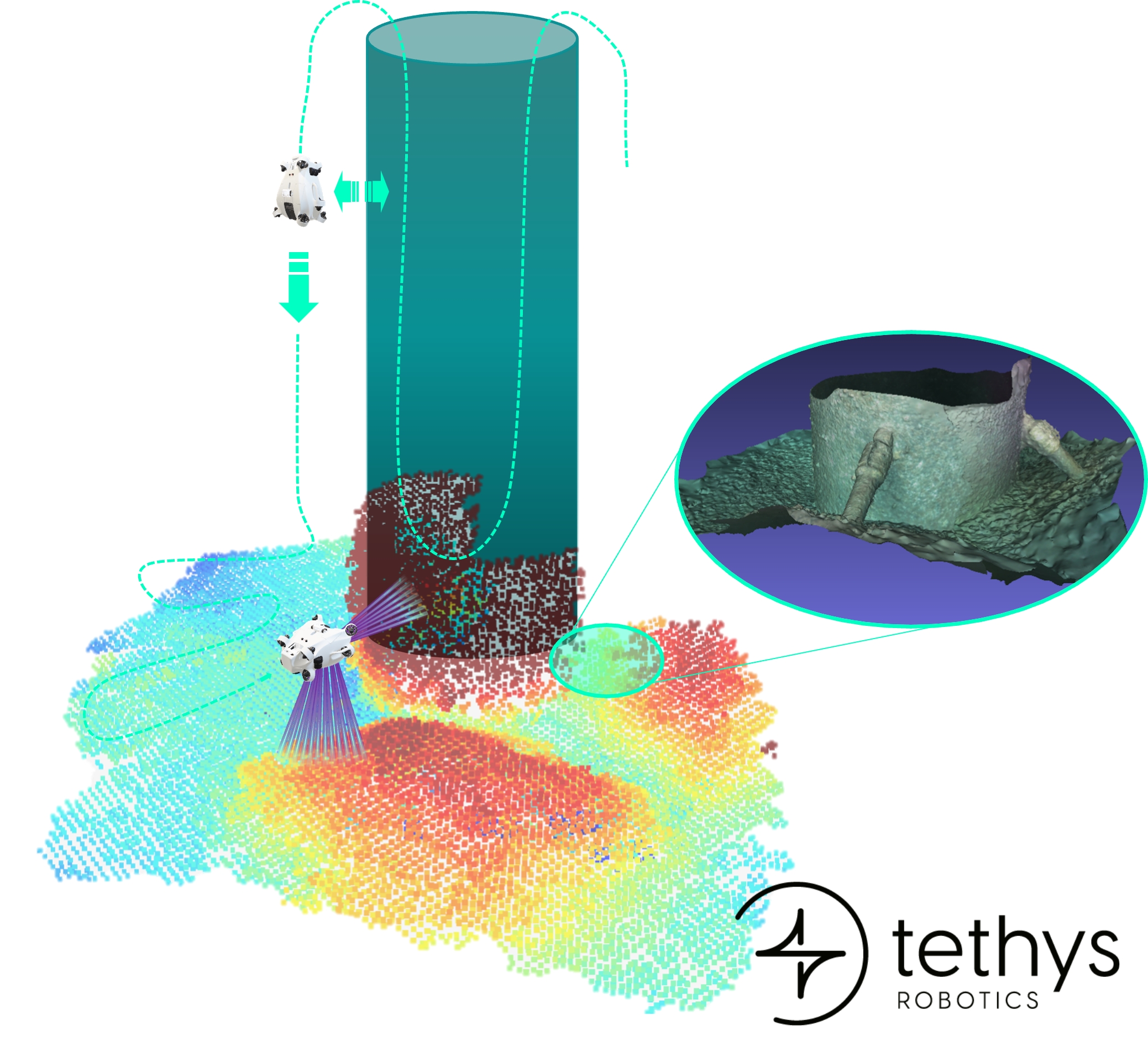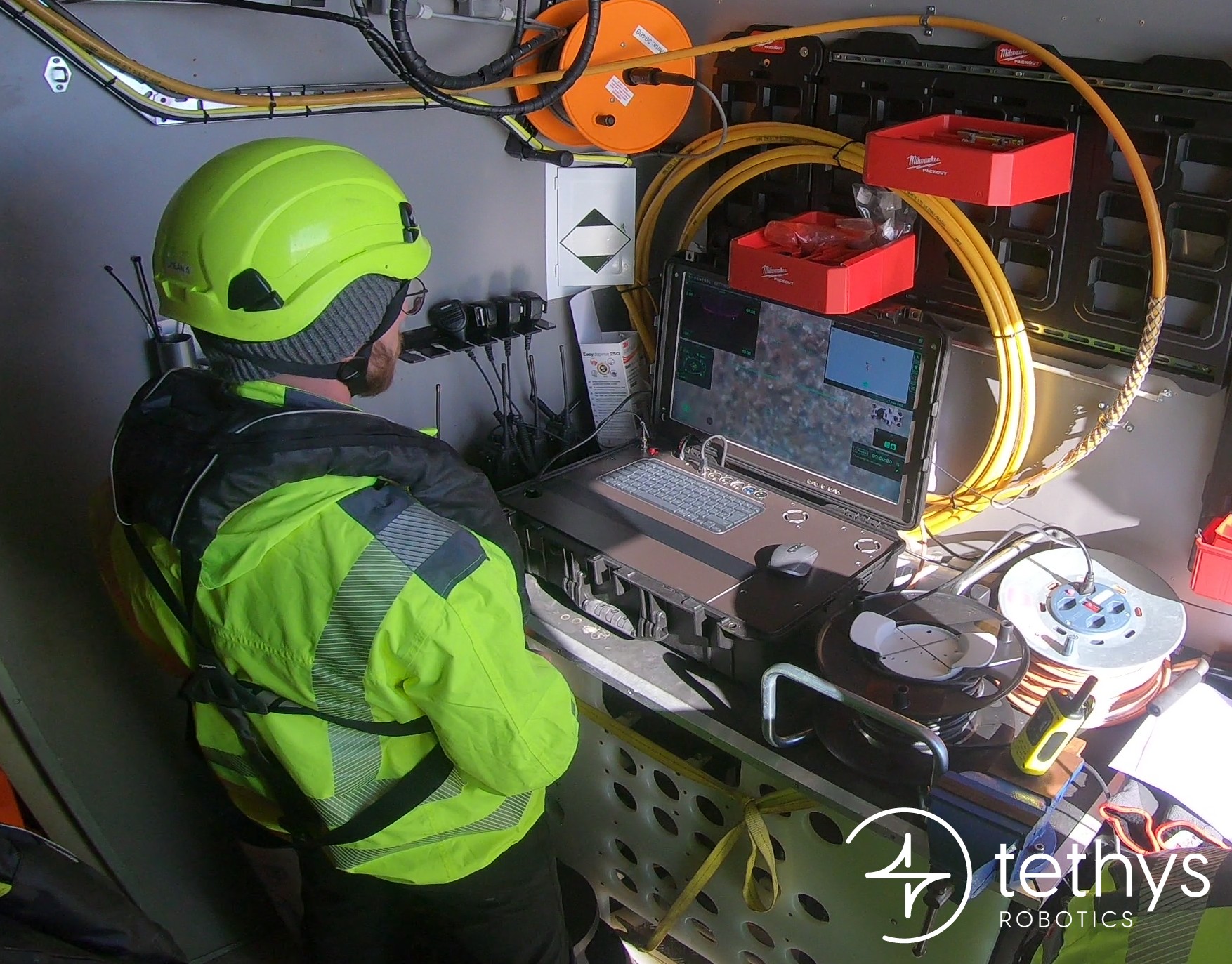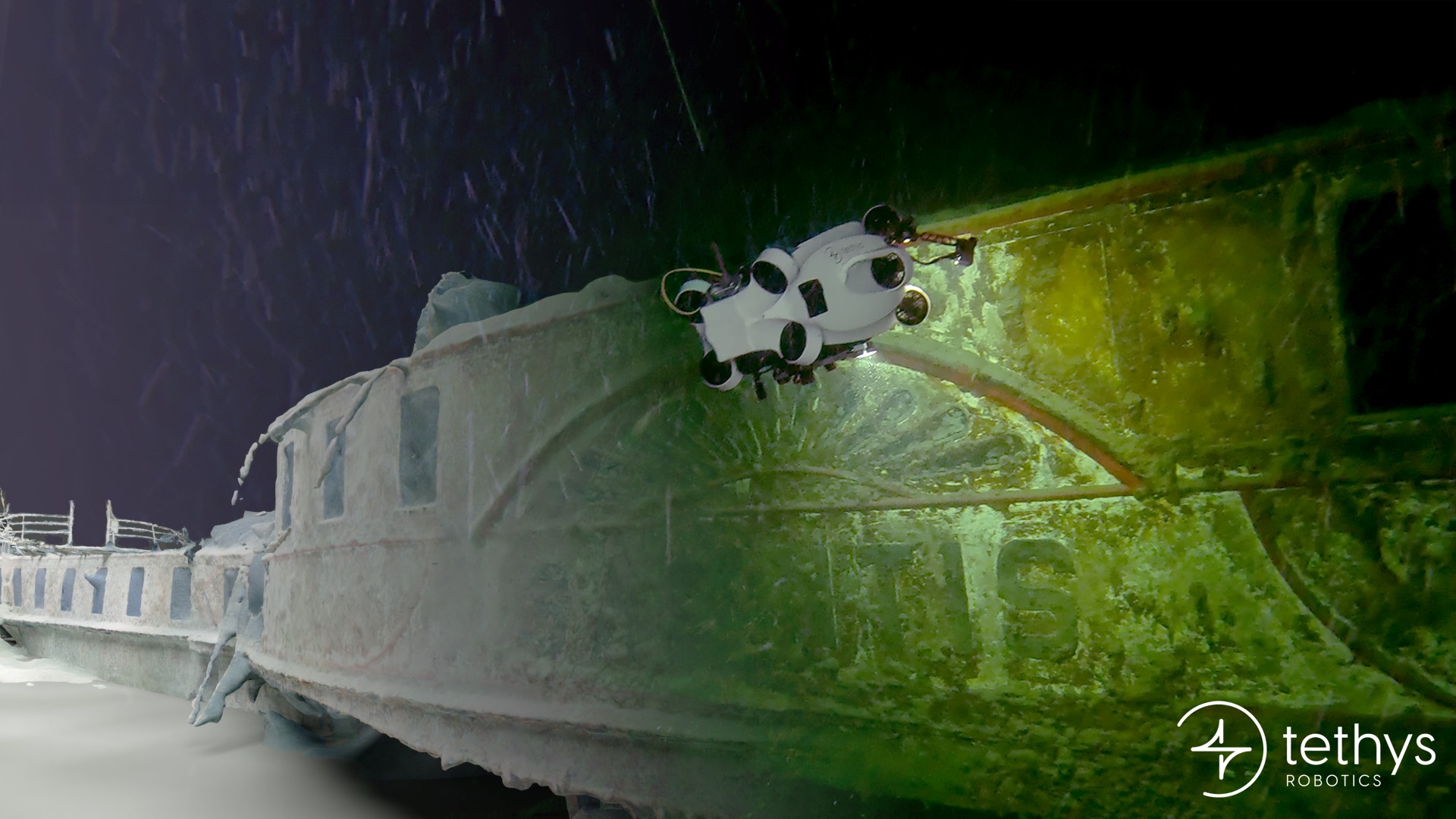Problem
Offshore monopile inspections using conventional lightweight work-class ROVs are hampered by long setup times (24–36 hours), high vessel requirements (heavy-duty cranes, large deck space, containerized control stations), and inflexible deployment options. These factors significantly increase operational costs, limit platform choice, and slow the pace of inspections across wind farms, reducing overall efficiency.
Solution
To demonstrate our offshore capabilities, we conducted a wind farm monopile inspection in the Baltic Sea using the hybrid ROV/AUV system Tethys ONE, launched from a CTV.
All equipment, including the ROV, control station, and crane-mounted LARS, were installed onboard in just 16* minutes, with a minimal footprint. Deployment, inspection, and recovery were completed in under 90 minutes on site.
Automation reduced pilot workload and enabled seamless data collection. Following a pre-defined path 10 m above the seabed, the Tethys ONE collected geo-referenced data used to generate consistent bathymetric and photogrammetric maps around the monopile, revealing minor signs of scour. Pilot-assist features enabled stable, precise inspections of weld circumferences (although marine growth obscured the weld itself) and anodes, using automated distance and position hold.
Unlike conventional lightweight WROVs, which require 24 to 36 hours for setup and installation, as well as a vessel equipped with a heavy-duty crane and space for a containerized control station and workshop (often welded onto the deck), the Tethys ONE can deploy from almost any platform. This includes a CTV, TP, or even the inspection structure itself. As a result, setup time and operational costs are drastically reduced, while deployment flexibility is significantly increased.
These time-and cost-saving features enable dramatically faster inspections across entire wind farms and offshore infrastructure.



.jpg)

.jpg)




